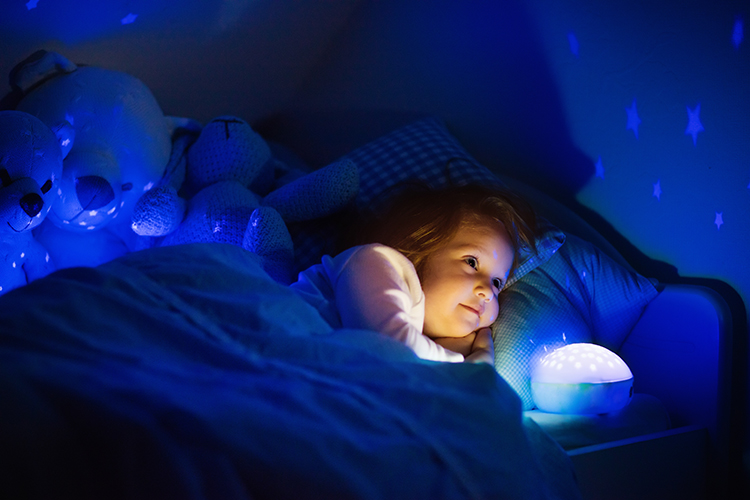
It's common for toddlers to fear the dark because of their active imaginations. The key is to support their creative brain development while helping them overcome their fears. If your child is scared of monsters in the closet, robots under the bed or creatures that might come in through the window, it's actually a positive sign of healthy brain development. The ages 3 to 5 are a crucial time for their creative brain growth, and research consistently shows that imaginative play is vital for their social and intellectual development. However, when their little brain gets tired and the lights go out, their imagination can turn into real fears. If your little one is afraid of the dark, here are five tips to help you ease their fears and turn off the lights without tears.
Teach reason while encouraging a happy imagination: Open the closet and show there are no monsters, get a flashlight and shine it under the bed and show your child how the windows are all locked. However, keep in mind that logic alone may not alleviate your child's fears since their imagination is still running wild. So, swap out the scary thoughts with happy ones to occupy your child's imagination. Figure out what’s on your child's mind, and then turn those thoughts from scary to sweet. Try to fill their mind with positive imagination and avoid scary media during the day. Even cartoons and princess movies can have frightening parts.
Address real-life worries: Cuddle up with your child and see if any real concerns are bothering them. Have they seen bad things on the news? Did they overhear a conversation about adult worries? Were they exposed to violence? Bedtime anxiety affects the sleep of 20 to 30 percent of school-aged kids.
Have a plan for what to do when your child doesn't want to sleep alone: For example, walk them back to their bed and spend a few minutes discussing what is on their mind while encouraging reason and positive imagination. Offer them a comforting item like a blanket, stuffed animal or doll, and switch on an additional night-light. Assure them that you will return to check on them in five minutes if needed. The next night, extend it to seven minutes and gradually increase the time each night. Resist the temptation to allow your child to sleep with you regularly, as this may convey the message that their bed is not a safe place. However, if your child is sick or terrified, it's OK to make an exception and let them sleep with you temporarily. Remember, sleeping in their bed is an important part of overcoming fears.
Get creative with your night-lights: Too much light in the bedroom can disrupt the release of melatonin, making it difficult for your little one to fall asleep and stay asleep. Pick a night-light that uses red light or an LED night-light that changes colors. Get creative: Consider hanging a string of LED holiday lights at the foot of their bed, installing a star projector on the ceiling or using a "moon in my room" night-light. And keep in mind that the blue light emitted from iPads and TV screens is known for hindering melatonin release and inhibiting sleep, so avoid the temptation of letting your child use an iPad in bed.
Incorporate stress-management techniques into your bedtime routine: You know the routine — putting on pajamas, brushing teeth, reading books and so on. But have you ever thought about incorporating some stress-management techniques into this routine? It can be something as simple as prayer, mindfulness or meditation. Even children as young as 2 or 3 years old can learn to relax their minds and let go of their worries as part of a bedtime routine. After that, take some time to cuddle and chat with your child, but resist the urge to stay with them until they fall asleep. Let them know you can't stay too long but have a few minutes to cuddle and talk. Ask them about the happy and sad moments and thoughts they experienced during the day. Then, just listen. You might be surprised by what they have to say.












